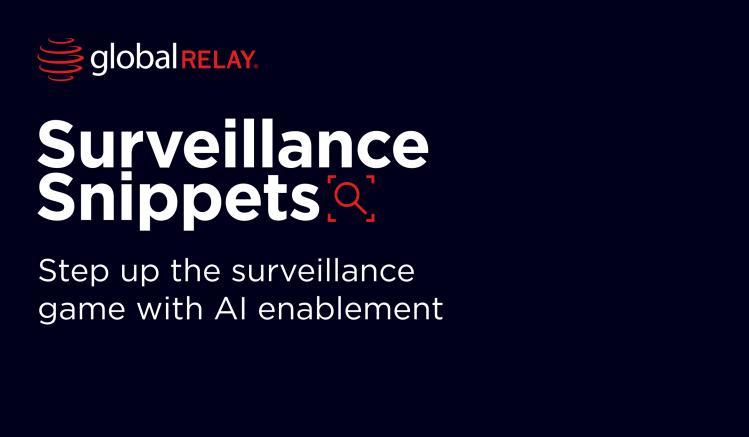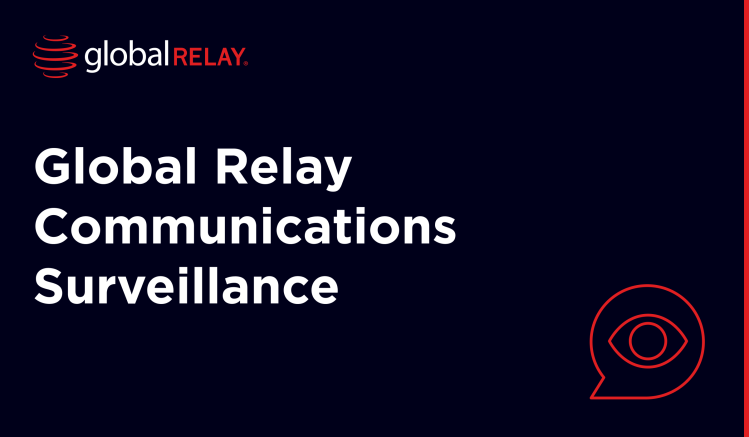In the same way that an orchestra need to tune their instruments and adapt to the speed the conductor sets when playing, all surveillance “instruments” need to be tuned and adaptable to the speed of data generation to achieve maximum performance. As the financial landscape evolves, firms have begun to utilize a range of new and popularized communications platforms, which has led to a higher volume of data generation than ever before.
So, how are firms meant to manage the proliferation of communications data that’s increasingly familiar to today’s financial landscape? While traditional keyword-based surveillance systems may have been expansive enough to sustain the speed of data previously, increased data generation requires the capabilities that artificial intelligence (AI) surveillance systems offer to remain effectual and future-looking.
Surveillance and data in harmony
Beyond recordkeeping requirements to preserve complete records of communication, firms have been advised to have complete oversight of data to ensure integrity and guard against potential market risk. Regulators like the Department of Justice have advised firms to assess the extent to which they have “access to data…to identify personal misconduct” as part of its Evaluation of Corporate Compliance Program.
Though, what once may have been only email records oversight has now expanded to include instant messaging, SMS, social media, and more. Clients and personnel are looking to utilize multi-faceted, modern communication channels in their daily functions to improve convivence and productivity. More channels for messaging produce additional avenues for potential misconduct and off-channel communications. As a result, surveillance teams are tasked with the critical role of supervising a complexify risk landscape.
This influx of data has put a strain on surveillance teams, with reviewers spending hours assessing and filtering vast numbers of messages to detect risk. Since lexicon-based surveillance operates on prescribed keywords, reviewers are tasked with reading through entire conversations to understand the context of a risk alert. The nature of lexicon-based surveillance also means many alerts are false positives that may only contain the use of a potential “risky” word, and don’t indicate actual misconduct. This means reviewers have to filter through noise before they can even begin to start analyzing true risk.
While lexicon-based surveillance systems run alerts against a bank of keywords to identify risk areas, AI-enabled surveillance, powered by Large Language Models (LLM), analyzes complete messages to understand the sentiment. Instead of finding phrases that exactly match keywords, LLMs will evaluate messages to sift out certain false positives.
Likewise, LLMs will notify reviewers if misconduct is suspected and offer a subsequent risk justification as to why it came to that conclusion. This method frees up reviewers’ time, enabling teams to identify more true positives and take action to escalate them earlier.
Not just the surveillance instrument, but the compliance instrumentalist
Upgrading systems to keep stride with data generation is one part of the equation, though equally as critical is having the right team to support this growth. To effectively leverage upgraded surveillance systems, firms need to craft a team of reviewers who have the skill set to understand how AI-enablement works.
Due to its novelty, firms are still determining their approach to AI training. In Global Relay’s State of AI in Surveillance 2025 report, respondents shared whether their teams had the requisite knowledge to utilize AI-enabled surveillance. 27% of respondents said their team had the requisite knowledge, while 47% answered that they intended to educate their team on AI surveillance. Another 13% said they intend to hire external resources that have experience with AI surveillance.
In addition to AI understanding, explainability has been a longstanding consideration in the development and inner workings of generative tech. While the industry seems to be shifting toward AI adoption, questions still arise about how AI-generated alerts can be explained to regulators. This necessitates the construction of solid model governance to explain how systems are being tested, as well as how risk alerts are being produced.
A change in tempo on generative tech
The latest Global Relay Industry Insights: Compliant Communications 2025 report found that 33% of respondents are already using AI in their compliance workflows, and 46% that are not already using AI for compliance are looking to introduce it in the next year – making for a combined 79% of firms planning to utilize generative tech in the coming year.
Compared to the same Compliant Communications report the year prior, where only 42% of respondents stated that they plan to integrate AI into compliance workflows, the interest in AI integration has heightened tremendously.
The industry is not alone in this interest – regulators are also moving toward a pro-innovation stance with shifting administration at the top of multiple offices. Across the panel, the Securities and Exchange Commission (SEC) and Financial Conduct Authority (FCA) have encouraged firms to experiment with AI technologies while also considering responsible use. SEC Commissioner Mark Uyeda spoke to AI’s ability to promote progression and enhance operational efficiencies:
“The use of [AI] technologies has led to enhancements in trading and investing as well as in financial products and processes. Recent developments – driven by ideas, investment, and competition – have enabled new ways for market participants and investors to interact with AI and the markets and have led to an expanding realm of potential uses cases in financial products and services.”
As the rhythm of industry innovation accelerates, now is the time to pull out all the stops in transforming surveillance governance. Open-source LLMs, which encompass and utilize all the data on the Internet, enable teams to enhance the effectiveness, scalability, and agility of their surveillance strategies. Combined with a team of trained reviewers, AI-enabled surveillance empowers firms to strike the right note on compliance and data completeness.




